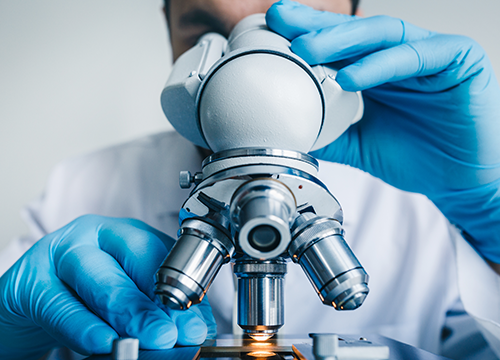Cancer biomarkers Research Laboratory
R&D > Laboratories > Cancer biomarkers Research Laboratory – Prof. Dov Hershkovitz

Our Vision
Cancer is a leading cause of morbidity and mortality worldwide. Accurate diagnosis of disease type and molecular profile are crucial for effective and targeted therapy to patients. Additionally, cancer is a dynamic process, both clinically and at the molecular level and therefore useful tools for disease monitoring could help tailor personalized treatment for each patient. Our research focuses of developing better diagnostic tools, both at the molecular level and the histomorphological level. Toward this aim we establish tissue specific, next generation sequencing (NGS) mutational panels – to identify the common cancer drivers in each tumor type. Additionally, we apply deep learning and artificial intelligence for the development of algorithms that improve microscopy based diagnosis. These algorithms come on top of our digital pathology platform, used for routine diagnosis. Another significant focus of our research is aimed at monitoring cancer progression and response to therapy. This is done via analysis of circulating tumor DNA.

Contact Us
Primary Investigators

Dov Hershkovitz MD PhD, Lab PI
Director, Pathology Institute 03-6974489 dovh@tlvmc.gov.il

Shlomo Tsuriel PhD, Lab manager
03-6974489 shlomots@tlvmc.gov.il
General Contact
Address
Sourasky Building
1st floor Room 11

Research
Circulating cell free DNA are short DNA fragments (~160bp) in the blood stream that come from decomposed cells. In cancer patients many times small portion of this DNA come from tumor cells and called circulating tumor DNA (ctDNA). Our group as well as others showed that analysis of plasma cell-free DNA for tumor specific mutation can be a useful tool for monitoring disease progression. In order to detect this small portion of tumor DNA in the patient blood we use a detailed molecular profile of the tumor DNA that is done by large next generation sequencing (NGS) panel. We then use the profile in order to build patient specific panel that cover up to 20 of the tumor mutations and is suitable for liquid biopsy. Next we use ultra-deep NGS sequencing in order to detect the traces of the tumor DNA in the patient blood. Using this technique we were able to detect tumor relapse months before it was detected by other standard tumor detection methods. We use this method both in research in order to better characterize tumor DNA and its correlation with tumor dynamics and in clinical cases on order to help the oncologist get better treatment decisions. |
In the last decades, there has been a significant shift in cancer treatment from “one size fits all” approach to personalized therapy. This shift started with the development of biological drugs that target specific genetic alterations and more recently with the introduction of predictive biomarkers for immunotherapy. Unfortunately, in many first line therapies like radiotherapy and chemotherapy, biomarkers for predicting and assessing treatment response are unavailable. The direct consequence is that patients receive the same treatment even though some would benefit from lower or higher dose and others would have no significant response and might had better response to different treatment. Our aim is to develop a biomarker that could show before or during treatment the actual tissue response that would allow stratification of patients to more personalized treatment. So that responders might need only shorter treatment, partly-responders might benefit higher dose and non-responders others might change the treatment strategy. Resent work showed that circulating tumor DNA (ctDNA) level in the blood is a sensitive and fast responding biomarker for treatment response that rise within the very first days of treatment. Our group, as well as others, showed that analysis of plasma ctDNA for tumor specific mutation can be a useful tool for monitoring response to chemotherapy and disease progression. Our work aim is to apply this approach in a prospective study in order to develop a monitoring tool for personalized RT. Our lab use high resolution monitoring of the tumor DNA in order to study the dynamics of ctDNA during treatment session and to evaluate whether ctDNA dynamics can predict the tumor response and can it help design patient specific treatment course. |
In recent years, new molecular tests have become the standard of practice in brain tumor diagnosis. Unfortunately, in many cases the amount of tumor tissue is limited and there are no available tools for these molecular tests, which might lead to false diagnosis lacking an objective basis. The molecular diagnostic process is also challenging, as some of the critical molecular changes are much localized i.e. change in one or few bases, others are larger like changes in gene copy number and gain or loss of whole chromosome arms. Our lab developing tools that use a targeted NGS panel combined with digital droplet PCR copy number assays that will significantly enhance the information extracted from each tissue fragment, allowing accurate diagnosis and tailored therapy. Compared to current commercial tools, our assays have higher succession rate with low quality samples and with samples with minimal tissue volume and succeed in cases where large commercial panels failed. Application of artificial intelligence for improved histo-pathological diagnosis |
Classical tissue diagnosis in pathology institutes is based mainly on microscopic evaluation of tissue slides. This can be aided by immunohistochemical testing and molecular assays. These tools are applied for various clinical questions including cancer diagnosis and classification of different pathological conditions
A process that started several years ago is going to revolutionize the way we make tissue diagnosis. Digital pathology is the general name for high-resolution whole slide scanning generating digital images that can be viewed on the computer rather than using a microscope. The availability of a digital image allows for the application of artificial intelligence algorithms for identification of microscopic morphological events as well as prediction of clinical outcomes. In our lab we apply a unique approach to generate effective algorithms to improve the diagnostic process. While deep learning methods are in general memory-based systems, our solutions combine logic and memory in intricate ways which enable us the development of solutions in domains which seems completely inaccessible to existing technologies. Hirschsprung’s disease is one such example. Hirschprung’s disease is a classic example of a “needle in a haystack” task, where identification of isolated events of a specific cell type (ganglion cell) within a large tissue sample has critical implications on patients’ morbidity. We chose to take this rare disease as a case study for our approach. In such case the total amount of data available in the world is too low to work in the standards the industry is expecting state of the art solution to produce meaningful results. We demonstrated that a small portion of the data available in one hospital enabled us to create a solution superior to human pathologists and to show that we can boost novice pathologist performance to be as good as expert level using less than 5% of time required for standards diagnosis. The solution we have created is robust, we tested the algorithm across different hospitals and scanners and achieved similar results. The Hisprung`s solution was published in Scientific Reports (https://www.nature.com/articles/s41598-021-82869-y) and it is just one illustration of the type of solutions we are creating. |
Gallery
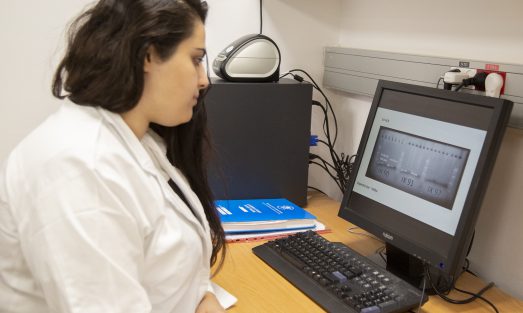
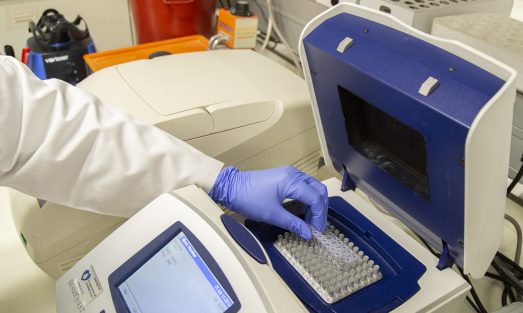
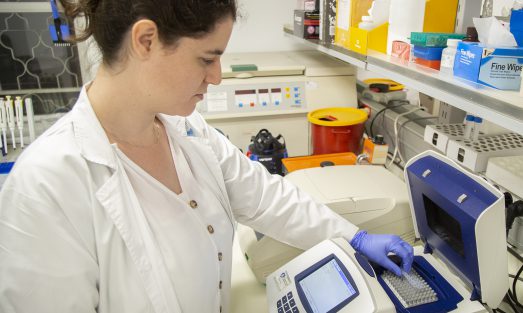
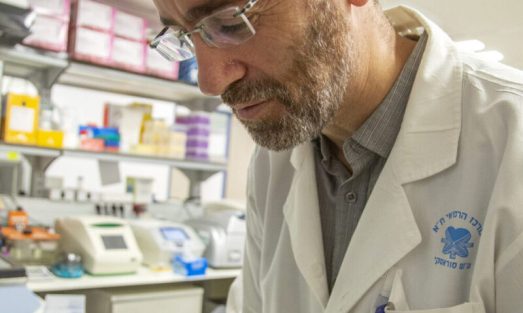
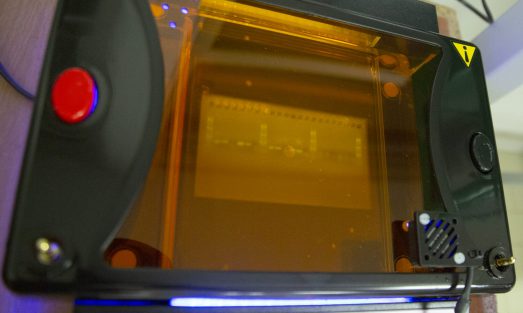
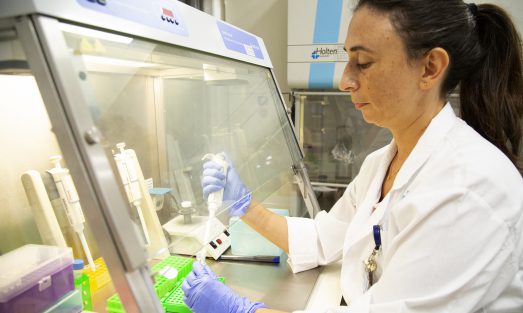
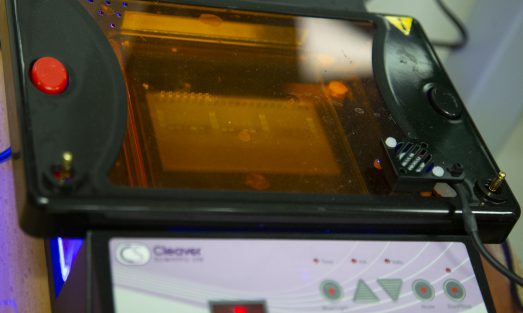
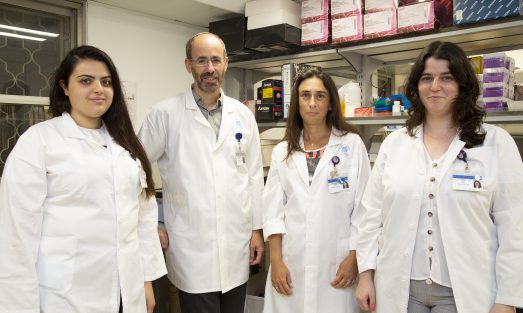
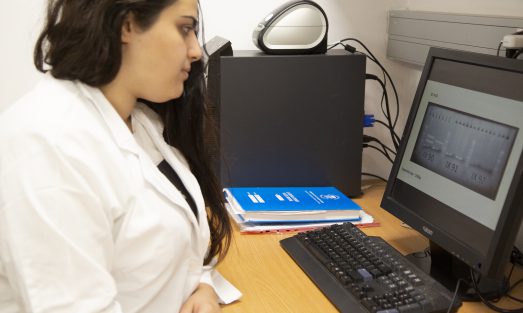

Our Team
Current Staff
Researchers
- Dov Hershkovitz MD PhD
- Shlomo Tsuriel PhD
Research associate
- Feldstein Sara MD.
- Victoria Hannes, research assistant
Students
- Kavita Thakur MD, MSc student.
Current funding

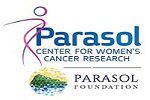

Highlight Publications
Adenoma and carcinoma components in colonic tumors show discordance for KRAS mutation Hershkovitz D, Simon E, Bick T, Prinz E, Noy S, Sabo E, Ben-Izhak O, and Vieth M Hum Pathol, 2014. 45(9): p. 1866-71
Clonal Evolution Models of Tumor Heterogeneity Shlush LI and Hershkovitz D. Am Soc Clin Oncol Educ Book, 2015. 35: p. e662-e65.
Subclonality for BRAF Mutation in Papillary Thyroid Carcinoma Is Associated With Earlier Disease Stage. Finkel A, Liba L, Simon E, Bick T, Prinz E, Sabo E, Ben-Izhak O, and Hershkovitz D.
J Clin Endocrinol Metab, 2016. 101(4): p. 1407-13.
More Publications >>
Molecular and Morphometric Tools for Next-Generation Pathology Diagnosis of Colon Carcinoma. Fisher Y and Hershkovitz D
Isr Med Assoc J, 2016. 18(7): p. 426-32.
Intratumor Heterogeneity of KRAS Mutation Status in Pancreatic Ductal Adenocarcinoma Is Associated With Smaller Lesions. Nagawkar SS, Abu-Funni S, Simon E, Bick T, Prinz E, Sabo E, Ben-Izhak O, and Hershkovitz D
Pancreas, 2016. 45(6): p. 876-81
Variation in KRAS driver substitution distributions between tumor types is determined by both mutation and natural selection. Ostrow SL, Simon E, Prinz E, Bick T, Shentzer T, Nagawkar SS, Sabo E, Ben-Izhak O, Hershberg R, and Hershkovitz D Sci Rep, 2016. 6: p. 21927
, Risk for molecular contamination of tissue samples evaluated for targeted anti-cancer therapy. Asor E, Stav MY, Simon E, Fahoum I, Sabo E, Ben-Izhak O, and Hershkovitz D
PLoS One, 2017. 12(3): p. e0173760
Clinically significant sub-clonality for common drivers can be detected in 26% of KRAS/EGFR mutated lung adenocarcinomas Simon E, Bick T, Sarji S, Shentzer T, Prinz E, Yehiam L, Sabo E, Ben-Izhak O, and Hershkovitz D
Oncotarget, 2017.
Characterization of Factors Affecting the Detection Limit of EGFR p.T790M in Circulating Tumor DNA. Fahoum I, Forer R, Volodarsky D, Vulih I, Bick T, Sarji S, Bamberger Z, Ben-Izhak O, Sabo E, Hershberg R, and Hershkovitz D
Technol Cancer Res Treat, 2018. 17: p. 1533033818793653
Mucor Appendicitis Resolution Following Surgical Excision without Antifungal Therapy. Naor S, Sher O, Grisaru-Soen G, Levin D, Elhasid R, Geffen Y, Hershkovitz D, and Aizic A Isr Med Assoc J, 2018. 20(9): p. 592-93
, Mutant KRAS Circulating Tumor DNA Is an Accurate Tool for Pancreatic Cancer Monitoring Perets R, Greenberg O, Shentzer T, Semenisty V, Epelbaum R, Bick T, Sarji S, Ben-Izhak O, Sabo E, and Hershkovitz D
Oncologist, 2018. 23(5): p. 566-72.
Tumor-to-Tumor Metastasis of Colorectal Adenocarcinoma to Ovarian Cystadenofibroma: A Case Report and Review of the Literature. Fahoum I, Brazowski E, Hershkovitz D, and Aizic A, Int J Gynecol Pathol, 2019.
Less Publications >>




